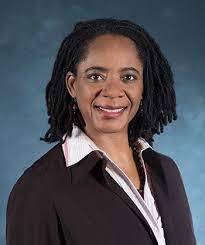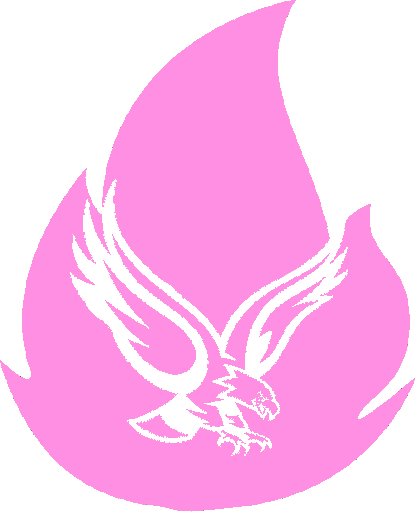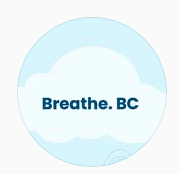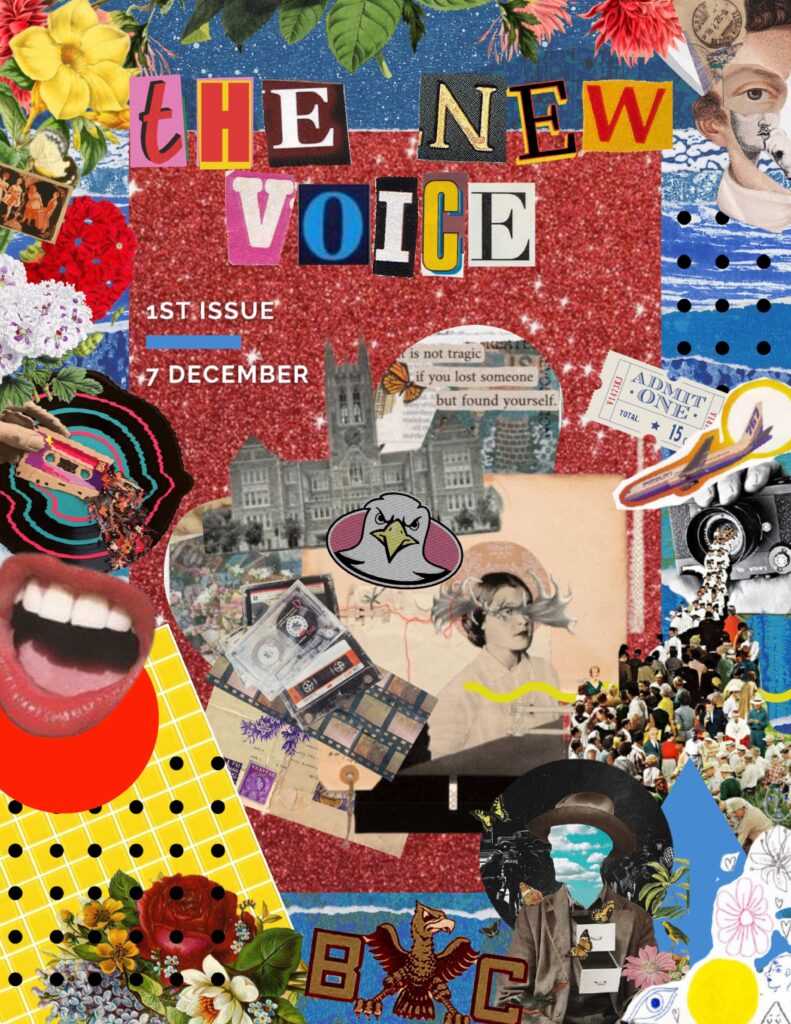
What is the context for the assignment?
This assignment comes from a journalism course called “The Underground Press” that is cross-listed in English & African and African Diaspora Studies (AADS). It has an average of 22-23 students at a time, ranging from freshmen to seniors. Created two years ago, the course soon evolved into an Engaging Difference and Justice course as well, with some students taking the class to fulfill the cultural diversity core requirement. Consequently, students are mostly journalism minors but also represent disciplines from all across the university.
What is the course description?
Here’s the course description from the university catalogue:
“The underground press was a vast network of loosely affiliated newspapers that emerged in the 1950s and 60s when young people asked very hard questions about the meaning of power and the role of the press. The outsider outlets spread through hundreds of communities throughout the nation, ranging from big city weeklies like The Village Voice and the Berkeley Barb to specialized periodicals representing the Black press, as well as other ethnic newspapers and progressive weeklies and magazines. This course examines the factors that helped pave the way for this journalism of dissent, and how this history affects alternative media today.”
How did you prepare students for the project?
To help prepare them, we studied the history of the traditional underground press, reading the inaugural issues of representative publications from around the country: the Los Angeles Free Press, the Berkeley Barb, The Paper from Michigan State University, The Rag at UT-Austin. One of our major goals was to understand how elements of each newspaper—its title and tagline, the opening editorial statement and back-of-the-book calendar of events, as well as the layout of the various articles—reflected its values about the relationship among newspapers, audiences, and civic engagement, essentially about the role of journalism within a democracy. Primarily created on university campuses by students affiliated with activist organizations, the traditional underground press often consciously created a “counterpublic sphere” to mainstream society.
But there was yet another counter-counterpublic sphere: contemporaneous ethnic and queer publications that were often left out of traditional histories of the underground press. Studying publications such as The Black Panther, La Raza, The Ladder allowed us to think about the difference between creating news organs about a community, which was usually the approach of the university-based titles, and creating forums for a community. Finally, to consider how this history influences more recent iterations of the underground press, we studied feminist publications from the 1970s, like Ms. magazine, as well as the hip-hop journalism of the 1980s and 1990s.
Throughout the semester, I had students do critical “close-readings” of a single issue of a publication, asking them to choose an issue we had not discussed in class but to use the method of analyses from our discussions as a model. I also asked students to conduct “media watches” on their own. This entailed their identifying and reading publications which cover current events and issues counter to the approach of mainstream media. Before each class, we would then discuss their “media watch” stories, mapping continuities and divergences in style and approach between the underground press of the past and today’s alternative media.
All of these layers of deconstruction–comparative histories, close-readings, media watches–laid the foundation for the final creative project, in which I essentially asked: Now that you know what the underground press has been and is becoming, what kind of publication would you create for these times?
How did you describe the group project to students?
Here are the assignment details I provided to students about the group project:
Each group must create a contemporary “outsider outlet” that contains 1) a collective editorial statement and 2) individual contributions from each group member. This will first require that the group answer questions such as these:
- What is the publication’s mission and audience?
- How will its framing—title, tagline, format, design—reflect that audience and mission?
- What issues will this outlet cover, and how (news articles? profiles? regular columns? features? graphs/charts? photography? how-to guides? indexes?)
- What media platform will be used to distribute the publication—newspaper or magazine? blog or social media? podcast? —and why?
On the designated day, each group will then introduce the new publication during a 15- to 18-minute class presentation. Each person in the group should speak at some point, i.e., be responsible for a portion of the presentation. And while it is unnecessary for the group to share entire articles, do share the highlights, e.g., core mission statements, quotes, photographs/graphics, clips.
Finally, while much of the presentation is about introducing and describing the new publication to the class, there should be a reflective, “meta” element as well that answers the following questions:
- How does this new publication fit within today’s media ecosystem?
- What makes its coverage and style “outsider” or “alternative” or—using the parlance of the 1960s—“underground” in contemporary terms?
At the end of the presentation, each group will field a brief Q & A session with the class.
Assignment Rubric
Product
___ Identifies mission and audience
___ Discusses the way the publication’s framing relates to mission and audience
___ Explains thinking behind mix of articles (profile, op-ed, column, etc.)
___ Explains thinking behind platform
Presentation
___ Organized so that each person contributes
___ Used audio/visual aids, e.g., PowerPoint, WordPress, etc.
___ Outlined publication’s highlights
___ Considered how publication fits into contemporary media ecosystem
___ Considered how publication reflects characteristics of the underground or alternative press
___ Delivered in professional manner
Additional Comments:
How did you grade students?
The grade for the final creative project was an average of the group-project grade and the individual-contribution-essay grade. I created a special rubric for grading the group project (see above). I used my more standard rubric for grading analytical papers for the individual contribution essay, in which I asked students not only to discuss what they themselves contributed to the final group project but also to explore how their group’s final project built upon the history of the underground press as we had studied it. Essentially, the individual contribution essay asked them to do a “close-reading” of their final creative project, as we had done all semester long when analyzing the individual issues of representative underground-press publications.
What did students submit?
The Igniter Magazine

The Igniter Magazine (BC credentials required) was an online publication. I asked the students to consider the platform they wanted to use, and how the platform also related to their mission and getting the word out. This group felt like, with our digital age, the web is the place to reach people. The Igniter’s mission was to try to uplift student activism at BC and make it more visible, so more people would know what’s happening on this campus. One thing I loved about this magazine is that it was part of participatory democracy. Underground presses generally had a very vibrant ‘letters to the editor’ section. The website also had a calendar of events to let you know where you can go and do stuff. And most of the issues in this publication were around race and climate change in the environment.
This was a publication that the students in the class said they would actually read and would look forward to. The Igniter is about embracing the Ignatian mission of going out into the world and setting it aflame, which is why the logo is of a flame. The idea is to do some local reporting that gets us to engage in participatory democracy and then go out in the world and do things.
Articles in the publication include:
- The feature story, “A Heterogeneous Mix” looks at diversity and inclusion initiatives in the chemistry department, which this student, who was a chemistry major, felt were exemplary and could be a model for other people.
- “Finding Our Way,” about the Compass mentoring program that supports first-year AHANA students on campus
- A profile about Latifat Odetunde, who started her own alternative publication: a tv series called Black Muslim TV as a way to help Muslim students find community on Boston College’s Campus.
- An interview with a BC alumnus about the state of BC activism.
- Some snarky pointers about how to go green.
Breathe BC

Breathe BC was an Instagram page about mental health issues. They chose Instagram because they thought it was a way for people to privately find information about mental health issues, resources, and encouraging words. They wanted to connect students to resources on campus as well as counselors and other people who might help them. In the two years I’ve taught this course, I’ve been almost startled how mental health is an issue that the students are very, very much concerned about and looking for ways to address on campus. I was impressed with how they really thought about how they would reach members of our community who have this particular issue and how to best help them.
The New Voice

The New Voice (BC credentials required) was a culture magazine and I love that the layout was a collage, and the visuals were just as important as the words. It included reviews of new music, new films, and new books. They were taking their inspiration from The Village Voice from the 1950s as well as The Rag in Austin. This magazine allowed those with artistic talents to work graphically, while others focused on the writing and organizing.
What are your final reflections on how this project went?
I think this creative assignment was so successful not only because we spent so much time throughout the semester examining the publications on which the creative assignment was modeled but also because we had a standard method of analysis that we applied repeatedly, e.g., how do this publication’s key elements work to convey its position on the role of journalism within a democracy? When it came time for students to create their own underground-press organs, reversing the analytical process was almost second nature as they considered the elements their publications would contain, and in what arrangement and presentation. Next time I teach the course, I plan to have digital librarians speak to the class about podcasting. Given the current media ecosystem, students should have the skills to create beyond print and on more digital platforms.